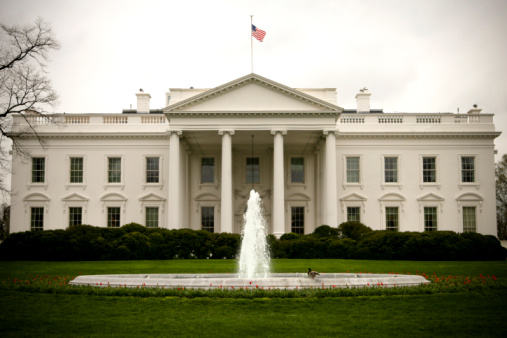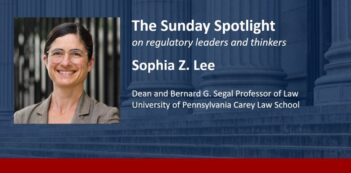
A state built to prevent all abuses of power would perform poorly.
Fear of the abuse of official power is and always has been a central thread in American constitutional discourse and political psychology. From the Antifederalists, to the Liberty League of the 1930s, to the American Civil Liberties Union, to the Tea Party Constitutionalism championed by Richard Epstein and Randy Barnett, libertarian constitutional movements and their theorists have urged that constitutional arrangements should build in strict precautions against the risk of abuse of power. That impulse cuts across the left-right divide and has no systematic or general political valence; the politics of precautionary constitutionalism varies over time and across issues. Today, libertarians of the left tend to urge precautions against executive powers of surveillance and detention, whereas libertarians of the right urge precautions against administrative regulation and putative takings of property rights; but the rhetoric and structure of argumentation is interestingly similar across these cases.
Yet the circumstances of the administrative state make a strictly precautionary approach to official abuse of power impossible. Indeed, the architects of the administrative state, I believe, understood exactly this. They recognized that abuse of power is not something to be minimized, but rather optimized. An administrative state will tolerate a certain level of abuse of power, as part of a package solution – as the inevitable byproduct of attaining other ends that are desirable overall. In that very rough sense, they attempted to push towards optimal abuse of power.
Why not strictly minimize abuse of power? There are three major reasons. First, and most simply, it’s too costly. Strict minimization is excessively costly both because it is costly to set up the enforcement machinery to prevent abuse and because the enforcement machinery will itself be staffed by officials who may abuse their power in turn – the problem of guarding the guardians. In principle, as the great economist Leo Hurwicz noted, the guardians may be arranged in a circle of mutual checking, but it has proven difficult to maintain the stability of such circular systems over time; an example is the instability of the Madisonian system of checks and balances.
The second reason is that abuses of power can occur on both sides of the divide between “public” and “private” actions. The architects of the modern administrative state were not only worried about abuse of power by governmental officials. They were equally worried about “private” abuses – really a special type of official abuse, effected through the self-interested behavior of economic actors wielding delegated state power under the rules of the common law of property, tort, and contract, and under corporate law. The administrative state thus trades off governmental and “private” abuse; it accepts increased risks of official abuse and distorted decision making in order to give governmental officials more power to suppress “private” abuses, in order to increase the activity level of the government as a whole, and in order to give administrators sufficient information to combat the evils that arise in complex sectors of the economy.
A crucial locus for the resulting tensions and tradeoffs has been the separation of prosecutorial from adjudicative functions in the administrative state. Classically, of course, to allow the executive to both prosecute and decide cases is a core violation of the principle of impartiality nemo iudex in sua causa, “no man shall be judge in his own cause,” and also a core violation of the separation of powers. But the administrative state has been willing to compromise even those principles, to some degree and in certain ways, in order to ensure an adequate level of information and an adequate activity level on the part of official bodies charged with countervailing private power. The point is not to deny the classical values of impartiality and separation; rather, the point is to desacralize those values. They are to be treated not as sacred side-constraints, but as institutional goods that have to be traded off against other institutional goods.
Consider the complex patchwork of rules that has resulted. Prosecutorial and adjudicative functions are separated at the lowest level of agencies, but only for formal adjudication on the record, not for either informal adjudication or the agency’s legislative rulemaking functions. And in any event, when the adjudication is appealed to the top level of the agency – the level of the commissioners themselves – there is no separation of functions at all, although there is some loose constitutional review of whether the commissioners have prejudged the facts. This patchwork is clearly an equilibrium compromise – the Supreme Court has described it as such – that trades off competing considerations, involving the risks of biased decision making on the one hand and, on the other, the risks of insufficient activity levels and insufficient expertise. It seems unlikely that the compromise can be proved to be optimal in any strong sense, but historically it was designed to protect multiple values, each to some degree but none fully, and in that weaker sense, has an optimizing character.
Finally, the optimal package of institutional arrangements today, in 2014, or even in say 1937, will tolerate a higher rate of abuse of power than in 1789. The problem is what Bill Scheuerman calls the “social acceleration of time.” The rate of change in the policy environment, especially in the economy, is so much greater than in the late 18th century that optimal institutional arrangements must allow for greater speed and flexibility of policy adjustment by officials. That, of course, is one of the main reasons we have such a large bureaucracy in the first place. Cumbersome Madisonian legislatures or constitutional parliaments, checked or choked by vetogates, are structurally incapable of supplying policy change at the necessary rates, a point made by students of constitutional law as radically dissimilar as Chief Justice Harlan Fiske Stone and Carl Schmitt. Hence, delegation to agencies and to the President has frequently been justified as a speeding-up mechanism.
The price of speed and flexibility of adjustment is administrative discretion, and administrative discretion creates increased scope for the abuse of discretion – despite the attempt to check such abuses with review under the Administrative Procedure Act for abuse of discretion, itself a costly and imperfect oversight mechanism. Broader and looser delegation, with fewer veto-gates or checks and balances, allows the executive to put new beneficial policies in place more easily, while also allowing more expropriation – more executive abuse of delegated power. As the rate of change in the policy environment increases, the benefits of loosening the constraints on new executive action increase, despite the greater risk of abuse.
The administrative state faces inevitable tradeoffs among the classical institutional goal of reducing official abuse of power, the positive costs of enforcing the constitutional rules, the regulatory goal of reducing “private” abuse of power, and a myriad of other, substantive policy and welfare goals. The administrative state’s response – by fits and starts, and with all sorts of cross-cutting political agendas and compromises – has been to grope toward a set of arrangements that tolerate a certain risk of official abuse as the unavoidable byproduct of a package solution that is desirable overall. One doesn’t know, and no one can prove or disprove, that the rules of the administrative state are optimal, certainly not in the strong sense that they reach a global welfare maximum. But there is no doubt that the architects of the administrative state were, in some cases anyway, searching for net institutional improvements in the face of the relevant tradeoffs. In that modest sense, they were intentionally optimizing.




